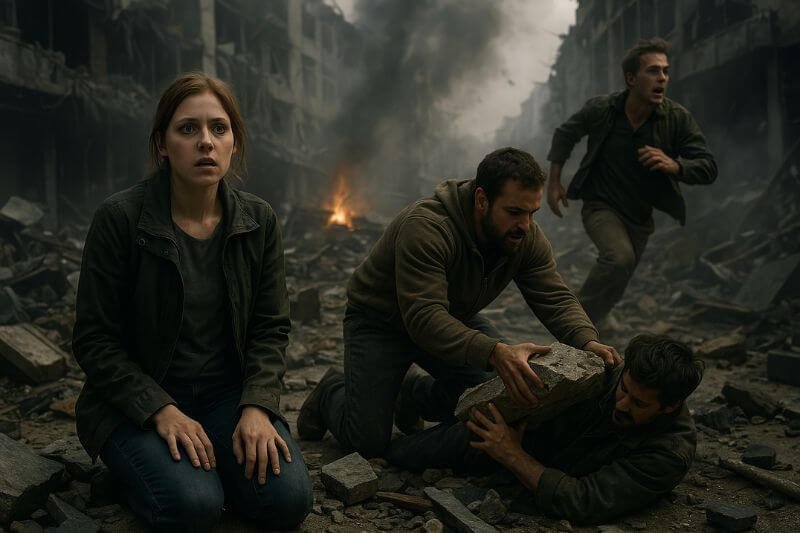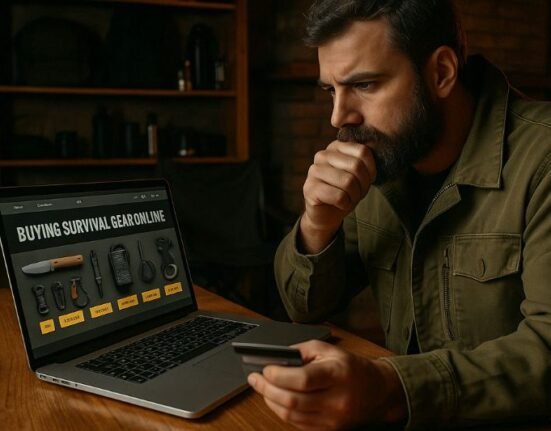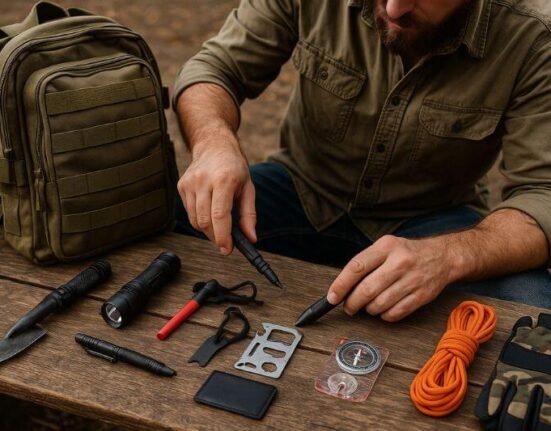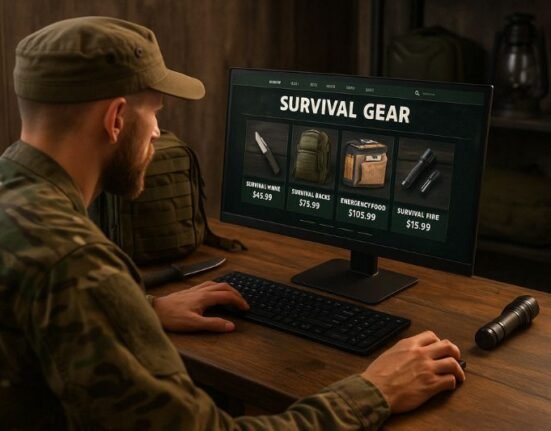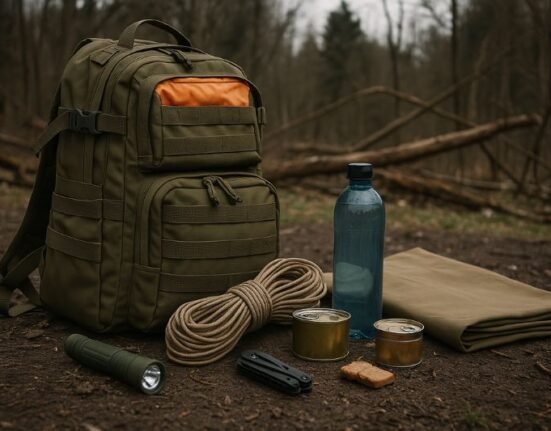Mindset catastrophes are rarely discussed—but they’re everywhere.
They occur not when a building collapses or the power grid fails, but in the invisible space between stimulus and reaction. That moment when you freeze instead of run, help instead of hide, or panic when calm is most needed.
Why do some people act with clarity in chaos, while others collapse inwardly?
It’s not just personality. It’s not just training. It’s the result of how their mindset was built long before the disaster.
Whether shaped by trauma, culture, values, or unconscious beliefs, our mindset during catastrophes becomes the compass by which we navigate life-and-death decisions.
And if that compass is cracked, no amount of gear will save you.
Three Survival Instincts — One Deep Root
In any catastrophe, humans tend to fall into one of three primal reactions:
| Reaction | Description | Psychological Trigger |
|---|---|---|
| 🧊 Freeze | Inability to move or act | Overwhelming fear, confusion, cognitive overload |
| 🫴 Help | Move toward others to assist | Trained altruism, social responsibility, strong moral compass |
| 🏃 Flee | Escape the scene for safety | Instinctual self-preservation, learned trauma |
These reactions are deeply wired—but they’re also influenced by culture, philosophy, training, and values.
“Under pressure, you don’t rise to the occasion. You fall to your level of preparation.”
— Archilochus
And if your preparation includes emotional awareness and moral clarity, your reaction may surprise you—in a good way.
The Freeze Response: Not Weakness, But Overload
Freezing in a crisis is often misunderstood. People label it as cowardice, when in reality, it’s a neurological safety mechanism.
- Your brain enters threat analysis mode, stalling action to assess risk
- Your body may dissociate to protect from trauma
- Your moral judgment can be overridden by fear
This doesn’t mean you’re not strong. It means your nervous system is overwhelmed.
🧠 Survival insight:
The freeze response can be reduced through scenario exposure, breath training, and decision-making drills under stress.
The Help Response: Why Some Step Forward Into Danger
Some people don’t hesitate. They run toward the fire. They lift debris. They shelter others.
This response often comes from:
- A deep belief in collective survival
- Past roles (military, medical, leadership)
- Philosophical convictions about meaning and morality
These individuals have often trained their minds to act with compassion under pressure. But beware—helpers also absorb the most trauma.
“Helping others is noble—but without preparation, it can destroy you too.” — Field medic, Haiti earthquake 2010
That’s why beliefs must be backed by psychological endurance.
The Flee Response: When Running Is the Only Option
In survival culture, fleeing is often judged.
But the instinct to run—sometimes without thinking—is deeply embedded in our biology. It’s not always fear. Sometimes, it’s survival intelligence.
People who flee in disasters are often:
- Hyper-aware of environmental threats
- Highly sensitive to danger signals (especially if they have trauma history)
- Influenced by prior experiences of being “the last out” or seeing others hesitate and suffer
But fleeing can carry moral weight too.
Who do you leave behind? What responsibilities do you abandon? What guilt follows after escape?
“Running may save your life—but it might cost your peace.” — Anonymous Hurricane Katrina evacuee
Understanding the psychology of the flight response helps reduce stigma—and improves how we design response teams.
Conditioning, Culture, and Crisis Behavior
Culture plays a massive role in shaping which response—freeze, help, or flee—we default to in disasters.
| Cultural Influence | Typical Crisis Reaction | Example |
|---|---|---|
| Military/Hierarchical | Help or follow structured orders | Japanese earthquake responders |
| Individualistic society | Flee or self-isolate | Some Western urban reactions |
| Collectivist/Community-driven | Help and coordinate | Indigenous disaster response teams |
| Trauma-heavy environments | Freeze or flee | Refugee camps, war zones |
This means our survival instinct isn’t just biological—it’s programmed through upbringing, media, and past experiences.
🧠 Survival tip:
Expose yourself to multiple cultural models of crisis response. Watch documentaries, run cross-cultural drills, study non-Western disaster recovery.
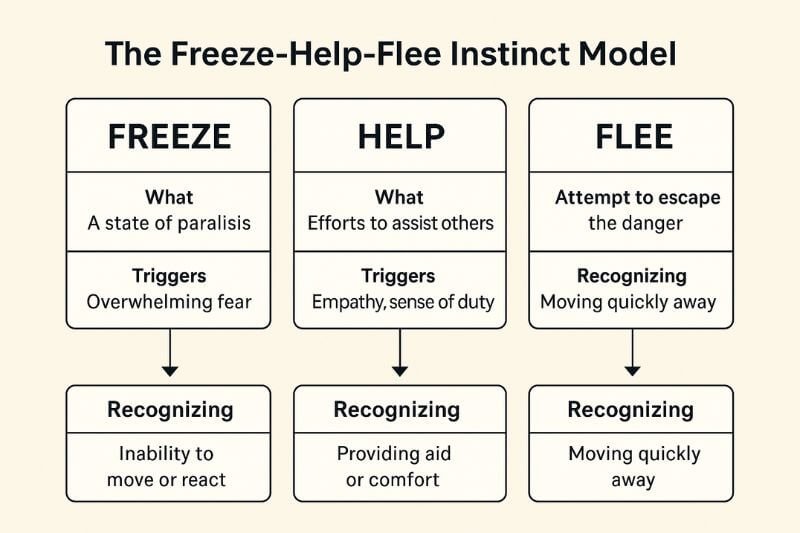
How Mindset Catastrophes Shape Our Crisis Behavior?
Mindset catastrophes don’t only happen in the moment of disaster—they begin long before. They’re the product of unchecked habits, unresolved fears, and untested assumptions. If you want to survive with clarity and purpose, you must first confront your natural survival bias.
🧠 Ask yourself with brutal honesty:
- In a real catastrophe, am I more likely to act, freeze, or flee?
- Do I picture myself helping others—or hiding, hoping someone else takes the lead?
- When surrounded by panic or confusion, do I take initiative—or wait for orders?
These are not theoretical questions. They reveal the hidden mindset catastrophes that can derail even the best-prepared survivor.
The key is to test your mental reflexes before reality does:
✅ Run high-stress simulations: blackout drills, evacuation races, role-reversal exercises
✅ Keep a survival mindset journal: after each drill, record your initial reaction, thought process, and what you’d improve
✅ Revisit past real-life emergencies—big or small. What did you do? What did you avoid? What did you regret?
This process of reflective training is not just psychological—it’s tactical. Because in the chaos of a real event, your mindset catastrophes will either sabotage or support your response.
And the good news? Every time you rehearse, journal, or observe yourself, you rewrite the script—one that leads not to panic, but to purpose.
Can You Train Your Response? Yes—But Not Overnight
Most people think their disaster response is hardwired.
In truth, you can absolutely train how you freeze, help, or flee—but it takes time, intention, and exposure.
Here’s how to start:
🔁 Use Controlled Exposure
- Simulate stressful situations with timers, noise, decision deadlines
- Start small (home blackout drill, timed evac prep)
- Reflect afterward: What did I do? Why?
🧠 Practice Response Journaling
- After every emergency drill or real event, answer:
- What was my first impulse?
- Did I freeze, help, or flee?
- Did that reaction match my values?
🧍 Do Role-Switching Drills
- Train yourself to act differently: if you tend to flee, simulate helping
- If you freeze, rehearse speaking up or giving orders
- The goal: expand your behavioral flexibility
“You don’t rise to the crisis—you fall to the level of your training.”
– Navy SEAL motto
Building a Personal Code for Crisis Response
Whether you’re alone or in a team, a response code gives you a psychological map in chaos.
Here’s a simple template to build your own:
| Scenario | My Default | My Trained Response |
|---|---|---|
| Panic in crowd | Freeze | Scan exits, breathe, move calmly |
| Stranger in danger | Hesitate | Move in, check safety, act |
| Group indecision | Stay silent | Ask questions, offer structure |
| Fire or collapse | Run blindly | Grab essentials, use plan A |
Print this out. Review it monthly. Run it with others.
This transforms your reaction into a decision.
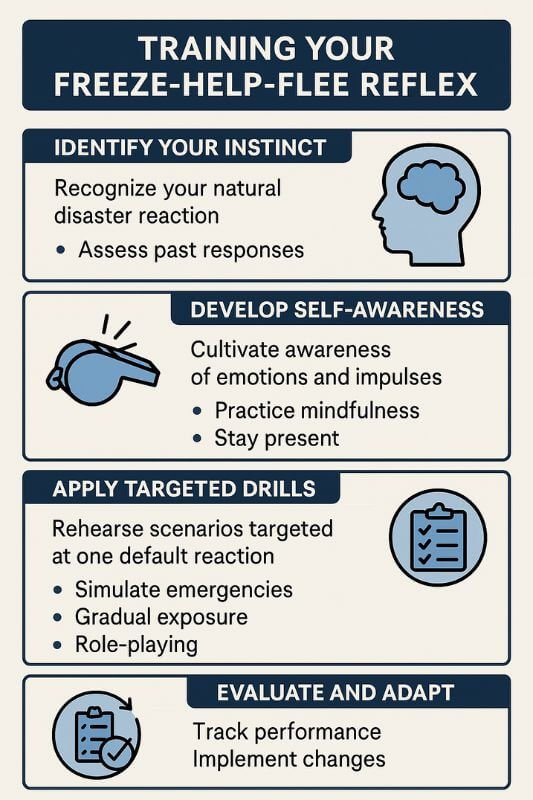
From Self-Reaction to Team Coordination
In group survival, knowing each other’s crisis instinct is crucial.
🧠 Team prep strategy:
- Discuss the freeze-help-flee model with your group
- Identify who’s likely to do what (no judgment—just awareness)
- Assign backup roles: if your “helper” freezes, who steps in?
- Build group drills that rotate reactions
This transforms diversity of instinct into team resilience.
“Don’t just survive together—react well together.”
✅ Conclusion: Know Your Instinct, Shape Your Outcome
In every disaster, someone freezes. Someone helps. Someone flees.
And the difference between them isn’t luck. It’s awareness, conditioning, and moral preparation.
Your goal isn’t to “be a hero.”
It’s to know who you are—and become who you need to be when it counts.
So ask yourself today:
“How do I respond—and how do I want to?”
Then start training the difference.
❓ FAQ – Mindset Catastrophes: Understanding Human Reactions in Disasters
Q: Are mindset catastrophes predictable, or do they occur randomly during disasters?
Mindset catastrophes are rarely random. They often emerge from unconscious habits, past traumas, and untrained reflexes. When disaster strikes, your body reacts fast—but your mental framework decides how you react.
For example, if someone was raised in an environment where fear was punished, they may freeze in a crisis out of fear of acting incorrectly. Another person, trained in first aid and emergency scenarios, may step in and lead without hesitation.
So yes—mindset catastrophes can be anticipated, and with the right preparation, they can even be reprogrammed.
Q: Is freezing during a crisis really a mindset catastrophe, or just a natural reaction?
Freezing is a natural neurological response—but it becomes a mindset catastrophe when it overrides better options because of untrained mental patterns.
In survival, freezing isn’t weakness—it’s protection. Your brain attempts to gather data before committing to a course of action. But when fear and indecision dominate, the freeze turns into paralysis.
The danger is when this becomes a pattern: someone who always freezes, even when safe action is possible. That’s where training matters. Drills, breathwork, and reflective journaling can reduce freeze-based mindset catastrophes, turning hesitation into thoughtful action.
Q: Can a strong moral code contribute to mindset catastrophes?
Surprisingly, yes. A person with a strong ethical code might experience conflicting priorities in real-time. Should I help the elderly neighbor, or protect my child? Should I evacuate now, or stay behind to help others?
These dilemmas can trigger hesitation, guilt, or burnout—especially if the individual never pre-rehearsed those ethical crossroads.
This is why mindset catastrophes are not just about panic—they’re about internal conflict under stress. Training isn’t just physical—it must include moral simulations to reduce reaction-time during real events.
🧭 Solution: Include ethical scenario drills in your survival prep, not just physical ones. Knowing your values in advance makes it easier to choose under pressure.
Q: Can mindset catastrophes affect leaders more than others?
Absolutely. Leaders often face decision fatigue during extended crises. They carry not only their own psychological load, but the weight of responsibility for others. A poorly managed leader mindset can result in:
- Delayed decisions
- Over-control and micromanagement
- Collapse after the event (emotional crash)
These are classic signs of high-level mindset catastrophes—where the appearance of leadership masks a storm of unresolved inner conflict.
Good leadership in survival isn’t about command—it’s about clarity. The best leaders prepare their mindset first, not last.
Q: Can children be trained to avoid mindset catastrophes?
Yes—and it’s easier than with adults. Children are incredibly responsive to stories, games, and role-play. You don’t need to teach them the psychology of fight-flight-freeze—you just need to teach safe and confident action patterns.
For example:
- Storytelling that reinforces bravery and helping behavior
- Practicing “What if?” games that promote flexible thinking
- Teaching body awareness and emotional vocabulary (“My stomach feels tight when I’m scared”)
Early training gives them a default reaction based on confidence—not fear. The younger they start, the fewer mindset catastrophes they’ll face as adults.
Q: Are there gender differences in how mindset catastrophes manifest?
While responses vary widely, studies show that social roles and expectations can influence how men and women respond during disasters.
- Men may feel pressured to act even when uncertain, leading to risky overconfidence.
- Women may prioritize caregiving roles and hesitate to leave unsafe zones to help others.
These patterns are not biological—they’re cultural overlays on mindset. Understanding how mindset catastrophes are shaped by gender norms allows us to train more equitably and adapt preparation to individual needs.
💡 Tip: Survival training should encourage everyone to question why they react a certain way—not just how they react.
Q: Can you fully eliminate mindset catastrophes with training?
No—but you can greatly reduce their intensity and duration.
You’ll always experience a shock moment when disaster strikes—that’s human. But with regular self-audits, realistic drills, and cognitive resilience work, you’ll recover faster, make better decisions, and stay anchored to your values.
Think of it like this:
- ❌ No training = chaos controls you
- ✅ Some training = you’re aware, but inconsistent
- ✅✅ Full training = your mindset becomes your anchor, not your obstacle
The goal isn’t to become robotic or emotionless. It’s to remain morally intact and tactically aware—even in hell.
Q: Are mindset catastrophes contagious in group settings?
Yes—mindsets can be as contagious as fear. If one person panics, freezes, or overreacts, it can ripple across a group, especially in confined or high-stress environments.
This is why team survival is just as much about emotional preparation as gear and planning. If your group shares a common mindset—based on training, values, and communication—you reduce the chance of chain-reaction failures.
✅ Prepping groups should regularly discuss:
- Their biggest fears
- Their expected roles under pressure
- Their emotional triggers and past reactions
This creates psychological cohesion—the antidote to group-level mindset catastrophes.
Q: Is there a spiritual or existential side to mindset catastrophes?
Absolutely. In moments of deep crisis, many people confront existential dilemmas—“Why me?”, “What’s the point?”, “Do I deserve to survive?”
If your mindset hasn’t confronted these questions before the event, they can overwhelm you when it counts most.
Survivors often report that their deepest struggle wasn’t logistical—it was spiritual. The guilt, the grief, the randomness of survival—these are all mindset-level challenges.
🧠 Recommendation: Include philosophical or spiritual exploration in your survival journey. A calm mind and a clear purpose are often more important than a sharp knife.









